Variations Lumpia, bò bía | Place of origin Fujian | |
 | ||
Alternative names Baobing, Runbing, Bopijuan Region or state Taiwan, Malaysia, Singapore (Teochew and Hokkien-speaking areas) Main ingredients popiah skin, bean sauce, filling of finely grated and steamed or stir-fried turnip, jicama, bean sprouts, French beans, lettuce leaves, grated carrots, Chinese sausage slices, thinly sliced fried tofu, chopped peanuts or peanut powder, fried shallots, and shredded omelette Other information Eaten during Qingming Festival Similar Kuih, Curry puff, Spring roll, Laksa, Gỏi cuốn | ||
How to make popiah
Popiah (Pe̍h-ōe-jī: pȯh-piáⁿ) is a Fujian/Chaozhou-style fresh spring roll common in Taiwan, Singapore, Malaysia and Thailand. Popiah is often eaten in the Fujian province of China (usually in Xiamen) and its neighbouring Chaoshan (and by the Teochew and Hokkien diaspora in various regions throughout Southeast Asia) during the Qingming Festival.
Contents
- How to make popiah
- How to make popiah spring roll wrappers skin
- Wrapper and fillings
- Types
- Taiwanese
- Southeast Asia
- References
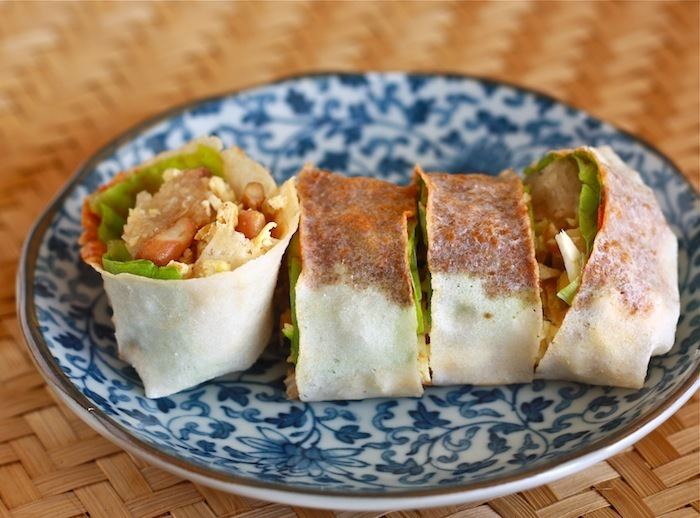
In the Teochew (Chaozhou) dialect, popiah is pronounced as /poʔ˩piã˥˧/(薄餅). which means "thin wafer". In varieties of Hokkien, it is also commonly referred to as /lun˩piã˥˧/(潤餅), which is the etymological origin of "lumpia" in Indonesia and the Philippines. It is referred to as rùnbǐng (潤餅) or báobǐng (薄餅) in Mandarin, and also as bópíjuǎn (薄皮卷).

How to make popiah spring roll wrappers skin
Wrapper and fillings
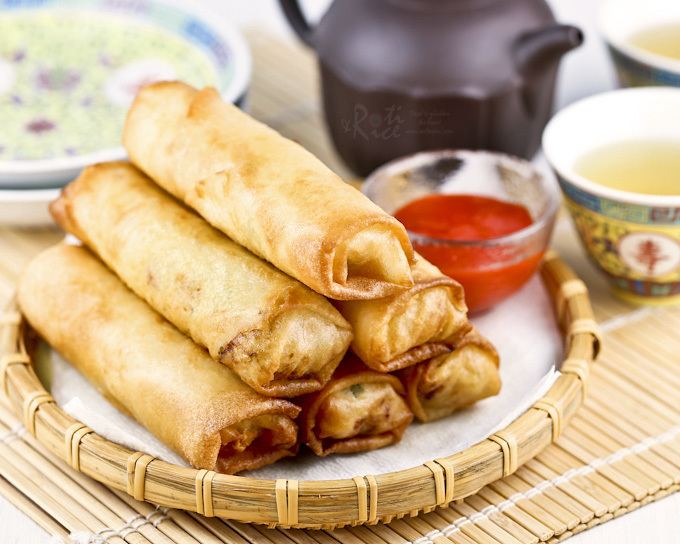
A popiah "skin" (薄餅皮) is a soft, thin paper-like crepe or pancake made from wheat flour. The method of producing the wrapper involves making an extremely wet and viscous dough. A ball of this dough is held to the right hand, then quickly "rubbed" (擦潤餅皮, Hokkien: chhat jūn-piáⁿ phê, literally "to rub a lumpia crepe") against a hot steel plate in a circular fashion, and lifted. Through this process, a very thin layer of the wet dough adheres to the plate and begins to cook. The upper surface of the crepe is then usually cleaned of excess pieces of dough using the dough ball through a dabbing process. When the dough has been cooked to completion, it is peeled off of the hot steel plate before being removed. The rubbing is typically done over two or three plates at once, which allows the baker to continuously produce crepes and gives the proper time for each crepe to be properly cooked.
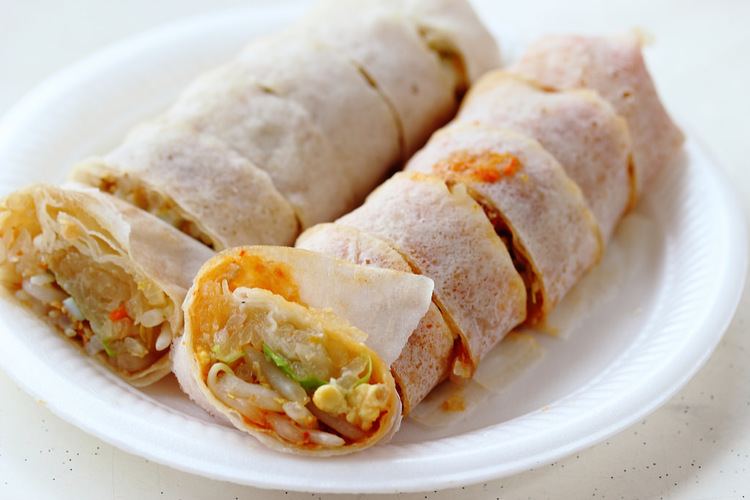
It is eaten in accompaniment with a sweet sauce (often a bean sauce), a blended soy sauce or hoisin sauce or a shrimp paste sauce (hae-ko, Pe̍h-ōe-jī: hê-ko), and optionally with hot chilli sauce before it is filled. The filling is mainly finely grated and steamed or stir-fried turnip, jicama (known locally as bangkuang), which has been cooked with a combination of other ingredients such as bean sprouts, French beans, and lettuce leaves, depending on the individual vendor, along with grated carrots, slices of Chinese sausage, thinly sliced fried tofu, chopped peanuts or peanut powder, fried shallots, and shredded omelette. Other common variations of popiah include pork (lightly seasoned and stir-fried), shrimp or crab meat. Seaweed is often included in the Xiamen versions. Some hawkers in Malaysia and Singapore, especially in non-halal settings, will add fried pork lard. As a fresh spring roll, the popiah skin itself is not fried.
Types
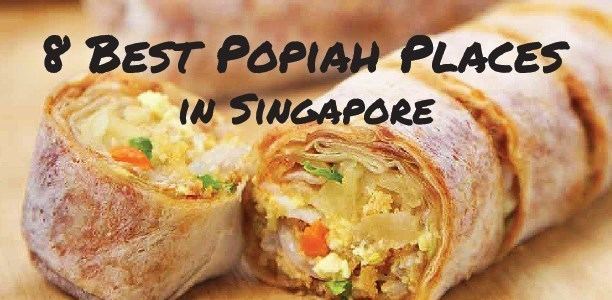
In mainland China, Taiwan, Singapore and Malaysia there are "popiah parties" at home, where the ingredients are laid out and guests make their own popiah with proportions ingredients to their own personal liking.
Taiwanese
In Taiwan, popiah are eaten in several varieties. They can be classified into fried and non-fried versions.
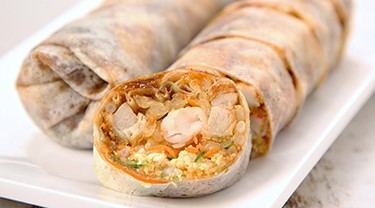
The fried version is very commonly served year-round in Chinese restaurants. It is small, crispy and rolled with meat or sweet red bean paste.
The non-fried version is much more complicated and is called runbing (潤餅) in Mandarin (still po̍h-piáⁿ (薄餅) in Taiwanese). There are two kinds of skins which roll the stuffing: one that is slowly heated until cooked is famous for being very thin; the other is baked. Furthermore, the way of cooking the stuffing is very different as well. In northern Taiwan, the stuffing is flavored, stir-fired, sometimes it goes with peanut powder, and the sauce is salty. In southern Taiwan, the popiah stuffing is water blanched without additional seasoning, and flavoured primarily with sugar and peanut powder. For people who live in southern Taiwan, the addition of sufficient sugar is key for popiah. Moreover, some people like to heat or steam the spring roll again after it is made.
The stuffing itself is quite diverse among different places. The basic stuffing includes vegetables that grow in spring, meat and thinly shredded omelet. In some places, they also add noodles, Chinese sausages, stewed vegetables instead of blanched ones, tofu, seafood, sticky rice, and so on.
Southeast Asia
In Malaysia, popiah stay by its name as it is part of the Chinese cuisine. In Vietnam, bò bía is the Vietnamese variant of popiah, introduced by Teochew immigrants. It is common to see an old Teochew man or woman selling bò bía at their roadside stand. In Thai cuisine, two types of popia (Thai: เปาะเปี๊ยะ) are popular: popia sot (fresh spring roll) and popia thot (deep-fried spring roll). In addition, Thai cuisine has also incorporated the Vietnamese summer roll under the name kuaitiao lui suan (Thai: ก๋วยเตี๋ยวลุยสวน). While in Burma/Myanmar, it is known as kawpyan (ကော်ပြန့်). Similar foods in other cuisines include the Indonesian Lumpia Basah and the Filipino lumpiang sariwa spring rolls, ethymologically derived from the Hokkien name Lum Pia. Majority of ethnic Chinese in both countries are of Hokkien origin.
